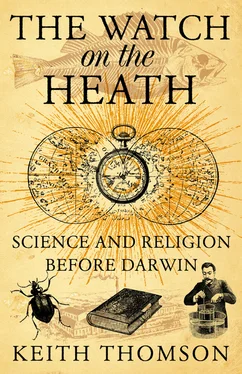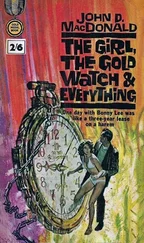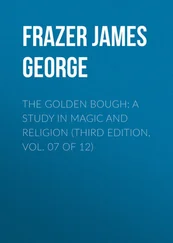Hume aimed to elevate moral philosophy to a science following the examples of Bacon and Newton in natural philosophy. A sceptic, he lost his faith very early, perhaps when a student at Edinburgh. The Treatise of Human Nature was the foundation of his later fame, even though the book earned little for him at first; in fact it was a commercial failure and a bitter disappointment, Hume wryly complaining that it ‘fell still-borne from the press’. Needing to earn a better living than his pen afforded, he spent a curious period first as a tutor to the insane son of the Marquis of Annandale and then as secretary and judge-advocate to General St Clair on an expedition against the French at Port Lorient, Guernsey, at the end of the War of the Austrian Succession. While now relatively hale and hearty, the life of a man of action scarcely suited him, but attempts to procure a more suitable position, a chair at Glasgow then one at Edinburgh, failed.
Following the death of his mother he returned to the family home in Scotland and began a period of great productivity, during which, in 1751, he wrote two works that had special bearing on an evolving, perhaps revolutionised, view of religion. In his Natural History of Religion (1757) and Dialogues Concerning Natural Religion (only published after his death in 1779) 31 he used all his powers of reason and argument to test the case for traditional revealed religion as opposed to the deist position, that everything that was important about religion could be (must be) derived by reason alone. In the Dialogues Hume carefully covered his tracks by laying out his arguments in the form of a conversation among three different philosophers. This was the familiar philosopher’s device that Galileo used in his Dialogue concerning the two major world systems (1632) – without fooling the Inquisition. Both Galileo and Hume were following the example of Cicero’s De Natura Deorum , or On the Nature of the Gods (77 BC), which is set as a debate among Epicurean, Stoic and Academic philosophers.
Hume’s Dialogues did its damage not so much in the conclusions it reached as in daring to ask the awkward questions: What do we know that is true and independently verifiable about God, as opposed to what we are told? How do we know? Hume even asked the evolutionary question: Is it not more logical to assume that complex living creatures had their origins in simpler ones than via some miraculous creation by an infinitely powerful, but nonetheless unknowable, designing intelligence? Hume challenged everyone who thought they could find a rational basis for understanding God. He expressed the problem very simply: If we had never thought about there being a God in the first place, would objective, rational investigation and argument necessarily uncover his existence and define his nature? If we are already sure that God exists, it is not difficult to find seemingly rational arguments to support that notion and even to conclude that God must have certain specifiable ‘properties’, but if we were to start from scratch – if we were immigrants from some distant pagan shore or outer space – would objective study of the natural world and deep philosophical enquiry produce ineluctable proofs of God? Would there be miracles and signs, for instance, that could not be explained away rationally? Was Voltaire right when he said that if God did not exist, it would be necessary to invent him?
And we always have to worry about the final ace that Hume has up his sleeve: logically, he says, anything that can be imagined as existing can also be imagined as not existing. For every piece of evidence we can find for the Creator, we have to allow the existence of equally powerful evidence against. Hence Paley’s dilemma.
As for religion itself, it would be wrong to think of it as having been a passive spectator at these feasts of the intellect. Indeed, the Church and the churches became their own best and worst friends. Ever since Martin Luther in 1517 nailed his Ninety-five Theses to the church door in Wittenberg and unleashed a flood of independent thinking about forms of worship and modes of belief, it had become impossible for the Church to speak with one voice and proclaim one doctrine. Instead, many voices, doctrines and practices competed for people’s attention. A single original discipline had been opposed by a structureless freedom reaching to the heart of belief. Each group was defined on nuances of doctrine and separate routes to personal salvation, defended in the name of reason.
One such argument was between the theists and deists over the critical matter of revelation. For the Christian Church, revelation meant the events, especially the miracles, by which God had communicated with his chosen people, and it especially meant God’s self-revelation in the form of his son Jesus, sent for the redemption of our souls. Deists, however, insisted that revelation was just the public-relations machinery of a controlling priesthood. God was enough to stand on his own, with the vast panoply of nature itself forming the only necessary evidence of his Being. In the Age of Reason, therefore, rational study of the world alone could reveal the Unworldly One. As Thomas Paine (of American Revolution fame) was to write in his deist manifesto:
When the divine gift of reason begins to expand itself in the mind and calls man to reflection, he then reads and contemplates God and his works, not in the books pretending to revelation … The little and paltry, often obscene, tales of the bible sink into wretchedness when put in comparison with this mighty work. The deist needs none of those tricks and shows called miracles to confirm his father, for what can be a greater miracle than creation itself, and his own existence. 32
Trinitarians opposed Unitarians, Arians and dozens of other sects over the divinity of Christ and the identity of the Holy Ghost and ‘Christ with God’. Was Christ the same as God? (Sabellians); was God different from the Holy Ghost and again from Christ, who was his son? (Trinitarians); or was Christ (as the Socinians argued) merely another in the line of prophets? Then the Sub- and Infralapsarians opposed the Supralapsarians on the question of whether the Fall of Man was intended by God or only permitted after he saw man’s wickedness – an argument that parallels the dispute among the Armenians, Calvinists and others over the issue of the predestination of individual salvation. Many English sects dissented from the Thirty-nine Articles that defined the core precepts of the Church of England. Among them were the Occasional Conformists and Non-Jurant Schismatics, who otherwise remained true to the doctrines of the Church but rejected part or all of its discipline. And there were those who dissented against practices of worship and inclusion, the latter including the Baptists, Anabaptists and Paedobaptists, with their differing views on the issue of baptism and consent.
After 1662, non-conformists of every stripe in England were persecuted with a new and ruthless zeal, but they always bounced back. Many schismatic sects, such as the Plymouth Brethren, became even more rigid in matters of piety than the Church of England or Catholics from whom they had split. Others were quite liberal in the interpretations of the Bible, particularly the Mosaic account of creation, thus allowing their followers to reconcile the new discoveries of science with their beliefs. As long as anyone insisted that Genesis remained the one unimpeachable source, however, the obvious result was confrontation and discord.
In 1696, all Europe was scandalised by the radical scepticism of John Toland, whose book Christianity not Mysterious33 was ordered to be burned by the public hangman in Ireland. Toland was born in Ireland and brought up as a Catholic, then became a Protestant and a free thinking rebel, eking out a living as a writer of highly polemical tracts and books and dodging from country to country just ahead of a host of would-be persecutors. (Among other accomplishments, he invented the term ‘pantheism’.) His writings exemplify what happened when free thinking and (even more dangerous) outspoken populists started to apply the pure reason of thinkers such as John Locke to a close study of the Bible. Toland thundered: ‘Whatever is contrary to Reason can be no Miracle, for it has been sufficiently prov’d already, that Contradiction is only another word for Impossible or Nothing.’ Toland dared to write what many felt, that it was absurd that the wine at the communion service should be thought literally to be transubstantiated into the blood of Christ. It was absurd that the disciples could have seen Christ walk on water. If you can believe in miracles, Toland argued, what is to prevent you from believing any nonsensical fiction? A church that depended on subjecting its adherents to the discipline of believing in miracles, and held its members in awe of the unknowable, was not worth belonging to. The precepts of the Church had to be understandable in material terms and expressed in plain words.
Читать дальше












